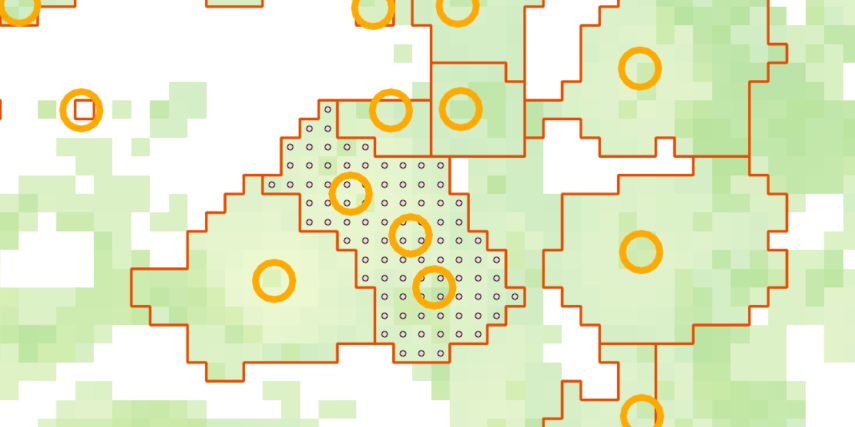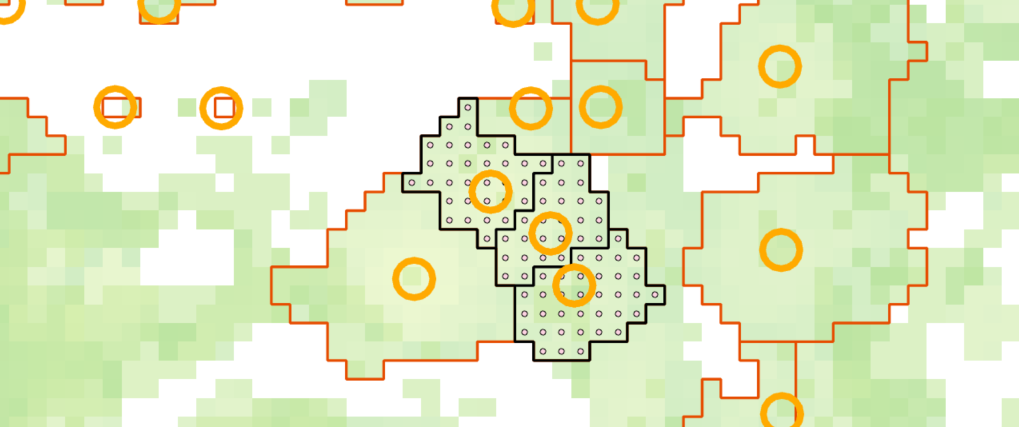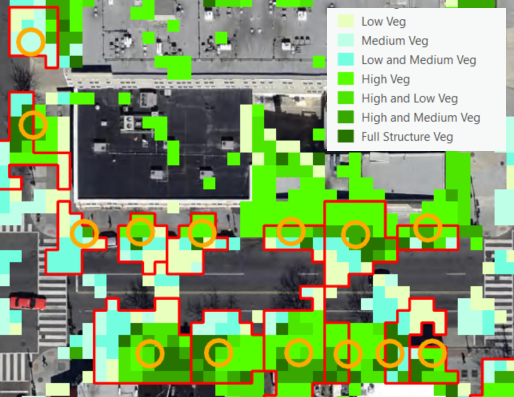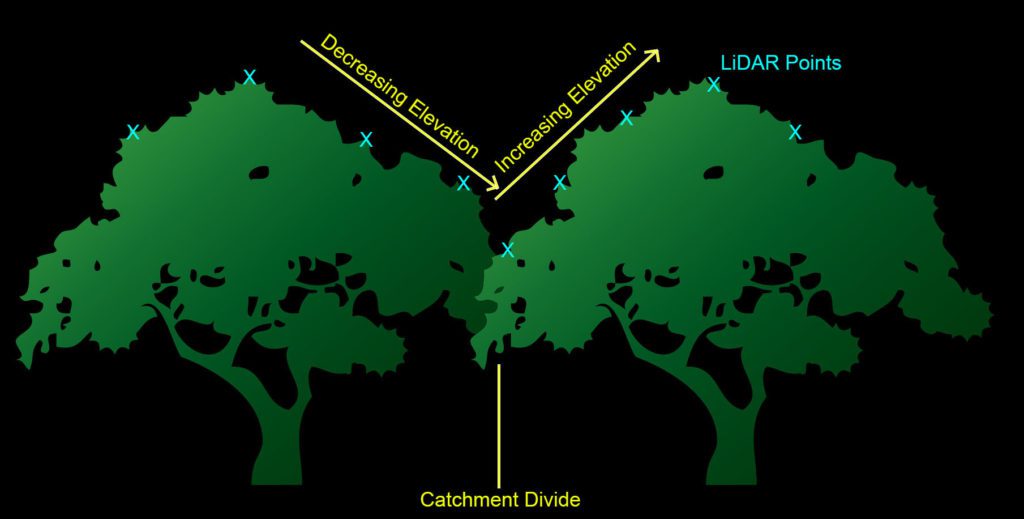SymGEO is pleased to announce the development of two new D.C. forest structure datasets created in partnership with DDOT Urban Forest Division, using LiDAR data managed by OCTO and the DC GIS program. The final version of this dataset will help Urban Foresters manage the canopy by providing important attributes including tree height, canopy width, and forest structure information.
A little background: LiDAR data is a digital cloud of millions of elevation points typically gathered by a low-flying airplane or ground-level vehicle. The elevation is recorded at every surface the measuring laser beams hit, so in the case of a forest, it will capture the top of the trees, some branches, as well as under-story vegetation and ground elevation. The LiDAR used for this project was also classified by the provider into a number of useful categories, including buildings, ground, and high / medium / low vegetation.
Using an innovative method, SymGEO used the ArcHydro toolset to create “catchment” areas for each tree, with tree locations being determined by the UFA Street Trees dataset. Each tree point was given an artificially high elevation value, and then all surrounding vegetation points around the tree point were examined. If the model determined that the vegetation points were connected to the tree, then it was included in the catchment. If an adjacent tree was found (indicated by adjacent vegetation elevation points increasing in height), then the catchment was divided into the two tree areas. Kind of technical, but maybe the graphic below will help 🙂
This catchment method worked quite well; however, it did suffer from capturing multiple trees in the same catchment. Fortunately, these cases were isolated quite easily be doing a spatial join between the catchment areas and street tree points, and identifying many-to-one joins.

For these cases, the catchment areas were converted into a grid of points, and the points were joined to the nearest tree. They were then back into areas (with the new tree ID as an attribute), effectively splitting up the area into smaller areas that had a one-to-one join with the tree points.

Once the tree area was established and cleaned up through manual inspection of outliers, attributes including tree height and average canopy width are assigned to each tree. These attributes will help the Urban Forestry Division manage the tree canopy even more effectively.
A secondary dataset was also produced using the LiDAR data that categorized areas into high, medium, or low vegetation, so some combination thereof. This helps the Urban Forestry Division prioritize areas for under-story plantings or the establishment of new urban canopies. This data set suffered a little from miscategorized LiDAR points, but it is a good starting point for an urban canopy structure dataset.

If you have access to a LiDAR dataset, and are interested in learning more about derivative products, contact us today – SymGEO is here to help!
